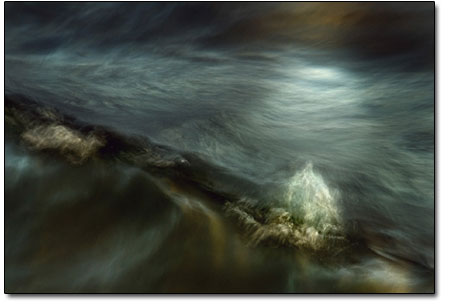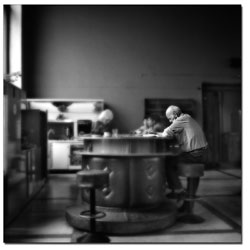|
| ||||
| Let there be light
by Jules Masterjohn Light. It’s one of the basic elements of the physical world that ordinary Janes and Joes may take for granted. Apart from those breathtaking sunsets or that momentary glistening of the river’s running waters, we often don’t give light another glance. But for the artist, light is everything. They owe to light, and its counterpart-shadow, the ability to distinguish the objects that populate this world, something we are reminded of on those toe-stubbingly dark nights in the mountains. According to the Harper Collins’ Dictionary of Art Terms and Techniques, light is “an area or point of high value in a picture as distinguished from the low and middle values that ordinarily occupy most of its area.” Value is commonly understood to be the lightness (high value) or darkness (low value) of a color. A highlight is the area of lightest value on an object or in a picture. Why the lesson on light and its function in a work of art? Simply, it is of primary importance to Seattle-based photographer Douglas Ethridge, whose exhibit opens tomorrow, Nov. 2, at the Open Shutter Gallery. His portfolios on display, “Solitary Voyagers” and “Primordial Seas,” offer two different genres of photography that utilize dramatic light as a symbolic and a formal element. In the series of black and white photographs, “Solitary Voyagers,” Ethridge is interested in catching people in their private moments while they inhabit public places. “I have for years been intrigued by the ‘public face’ people put on as they go about their solitary ways, their state of mind conveyed by body language, their facial expressions and sometimes even their shadows.” In this way, his philosophy builds on the tradition of “street photography” popularized by the modern master Henri Cartier-Bresson. Ethridge melds Bresson’s journalistic eye with that of a psychologist’s mind. Many of the photographs in “Solitary Voyagers” play off the psychological concept of the alter ego or the “other” by depicting a cast shadow of the human form with the actual figure absent from the picture frame. Here the metaphoric implications of the shadow lend pulp to otherwise ordinary photographs. Ethridge’s manipulation of light and visual clarity draw attention to specific features within his compositions. In “Sr. Angelli,” the sun is setting to the right side of the picture, which causes a long shadow to be cast from the man’s bicycle, yet the shadow-side of the bike is highly illuminated. This improbable lighting scenario combined with the varying degrees of focus, suggest an ethereal presence in the scene. The title, “Sr. Angelli” seems to support this interpretation.
In “Tea Time,” the photographer uses light and a diffused focus, once again, to bring an otherworldly atmosphere to this image. The light conditions in “Tea Time” show a strong side lighting streaming from a high window and flooding across the café, showing us a “light from above.” As we would expect from a realistic medium, the photographer’s tools accurately describe the dimpled leather banquette of the café’s counter and the reflective sheen of the brushed stainless commercial appliances. Yet there is an idyllic portrayal of the textures, a divine truthfulness of the surface qualities that draws us into an alternate reality. Once there, the figure our eyes focus on is the only figure in focus and the one with bright light washed over his head and shoulders. Again, Ethridge’s selective use of image clarity and highlight lend a poetic, almost cinematic quality for our consideration. Ethridge takes us into the abstract realm of art with his body of work, “Primordial Seas.” These photographs are close-up views of the ocean’s surface as described by art’s formal elements – color, light, texture and motion. As an urban person, the photographer had not been accustomed to turning his lens toward the natural world. But in 2006, with an opportunity to live at the ocean’s edge, he began an intimate daily inquiry by taking photographs “with the intent of giving visual expression to the emotional impact of living by the sea.” The photographs, though a small selection from his larger body of work, are beautiful. He has organized the amorphous images into four groups: “Genesis,” “Apocalypse,” “Grace” and “Illumination.” These words lean toward the religious in their flavor, yet they also connote states of being or postures of perception. In “Genesis,” multi-colored tendrils of water appear as if they are liquid energy, held in cauldrons, brewing up life. His “Apocalypse” photographs offer images of slippery churning waters that portend a deep upheaval where something within is about to erupt. The artist best characterizes these photographs with his words, “The more abstract the images became, the more clearly they touched an emotional chord, becoming microcosms of the greater world.” • Douglas Ethridge will be at Open Shutter Gallery on Fri., Nov. ,2 from 5-8 p.m. for an opening reception. His exhibition is on display through Dec. 5. The Open Shutter Gallery is located at 755 E. Second Ave. in Durango. Call 382-8355 for more information.
|



